“经络不通,病生于不仁,治之以按摩醪药” This sentence is from the “Huangdi Neijing (Yellow Emperor’s Inner Canon)” in the chapter “Xue Qi Xing Zhi Pian”. It emphasizes the importance of keeping the meridians unblocked for maintaining good health. Massage and herbal medicine are considered effective treatment methods that can regulate the meridians, promote the circulation of qi and blood, and help in treating diseases and restoring health. This ancient wisdom passed down through centuries tells us that massage has therapeutic effects in relieving bodily pain.
The Traditional Chinese medicine (TCM) massage, known as “Tuina,” focuses on the manipulation of the body’s meridians and muscles to alleviate pain and promote overall well-being. It also serves as a preventive measure for various ailments. The combination of massage and herbal therapy has been regarded as effective in regulating the body’s meridians, improving Qi and blood circulation, and aiding in the treatment of diseases, aligning with the ancient Chinese philosophical concepts.
Tuina has been empirically proven in modern medicine to be effective in relieving pain caused by soft tissue injuries. As a result, registered massage therapists are considered essential in the regulated healthcare industry in Canada, with a high demand for their services. Over the past 70 years, TCM has undergone a revival process, driven by national support and the emphasis on interpreting TCM through modern science. Extensive research has validated the therapeutic effects of massage techniques, leading to the improvement and scientific application of TCM Tuina in clinical practice.
Our dedication to studying various TCM massage techniques, including the imperial court’s “Lijin” method and “Jingu visceral and tendinous massage,” combined with modern microcirculation theory and meridian pathology, has led to the creation of a systematic approach known as the “Three-Layer Tuina Method.” This method follows the principle of treating from superficial to deep layers, addressing skin and fascia, musculoskeletal structures, and internal organs. With over 30 different traditional massage techniques, we offer specialized treatments tailored to individuals and their specific conditions, considering the meridians, organs, muscles, and Qi-blood balance comprehensively for accurate diagnosis and effective treatment.
For individuals with chronic pain, particularly those suffering from neck and lumbar spine issues due to a lack of physical exercise, TCM emphasizes the importance of restoring balance to the “Jin” (tendons) and “Mo” (Myofascial). This involves first “adjusting the tendons” to regulate the condition of the meridians and then “correcting the bones” to realign the skeletal structure. Our approach combines both traditional and modern medical knowledge, providing a comprehensive and scientific approach to treatment.
During the treatment of pain-related conditions, our Tuina massage technique employs gentle and soothing force, avoiding any discomfort or harm to the patient. The treatment includes a combination of rolling, kneading, twisting, and tapping motions, enabling the force to penetrate deeply and spread throughout the body. After about ten minutes of treatment, patients may experience a mild warming sensation and a tingling feeling, while the previously unbearable pain is significantly reduced.
Based on our extensive clinical experience, we have found that the Three-Layer Tuina Method can produce noticeable improvements in common symptoms after just one session. However, for chronic pain conditions, a personalized treatment plan is necessary based on individual conditions. TCM Tuina is not only an excellent method for treating pain but also proves effective for various difficult-to-treat conditions, age-related ailments, and chronic diseases.
Our comprehensive therapeutic approach covers two main categories of conditions. Firstly, functional internal medicine issues such as insomnia, headaches, irritable bowel syndrome, functional constipation, chronic fatigue syndrome, dysmenorrhea, and menstrual irregularities. Secondly, challenging neurological conditions, including spasmodic torticollis, Parkinson’s disease, amyotrophic lateral sclerosis, subacute combined degeneration of the spinal cord, neurogenic bladder dysfunction, among others.
TCM Tuina utilizes the hands and palms to manipulate the body, employing different techniques and forces to achieve the goals of unblocking meridians, harmonizing Qi, treating organ-related diseases, and improving overall physical health. As an integral part of TCM, Tuina has been widely used in clinical practice and increasingly recognized as an effective therapeutic method.

